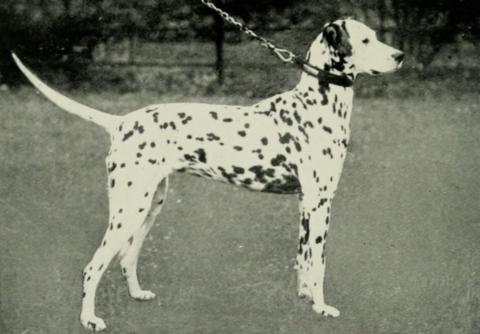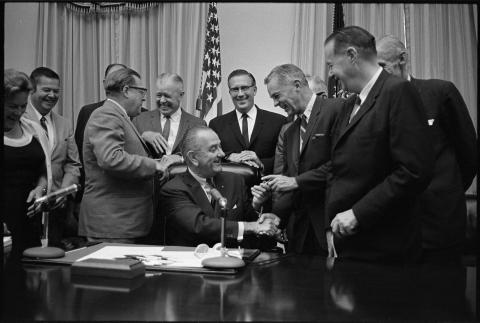
Sports Illustrated* reports the story of Pepper, the Lakavage family's Dalmatian that was stolen from their farm in Pennsylvania in June 1965 and sold to a research facility in New York City. Pepper's theft and eventual death prompts Rep. Joseph Resnick (D-NY) to introduce a Laboratory Animal Welfare bill in Congress, an early milestone in the history of the Animal Welfare Act.
* Phinizy, C . (1965, November 29). The Lost Pets That Stray to the Labs. Sports Illustrated . https://perma.cc/8NW7-2BMJ . Accessed 3 April 2024 .

Dalmatian Ch. Rugby Britannia, Bred by Mrs. Hebe Bedwell from "The complete book of the dog" (1922). Courtesy of University of British Columbia Library, image by Tom Reveley.
Rep. Resnick's efforts lead to the passage of the (Laboratory) Animal Welfare Act, of which the stated intention is "…to protect the owners of dogs and cats from theft of such pets, to prevent the sale or use of dogs and cats which have been stolen, and to insure that certain animals intended for use in research facilities are provided humane care and treatment…". The new law establishes licensing for dog and cat dealers and authorizes the Secretary of Agriculture to regulate the transport, sale, and handling of animals pre-research or “for other purposes”. The Act covers six species: dogs, cats, nonhuman primates, guinea pigs, hamsters, and rabbits.

President Lyndon Johnson signs the Laboratory Animal Welfare Act into law on August 24, 1966. Courtesy of the LBJ Presidential Library, image by Mike Geissinger. Background image: First page of the Laboratory Animal Welfare Act. Courtesy of the USDA, National Agricultural Library. Semi-opaque layer added over image for readability.